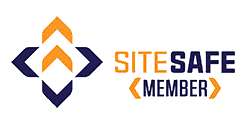
White mould is a dangerous variety of fungal species of mould that may appear in high moisture and enclosed spaces with little or no air passage. The appearance of the mould is generally white but may change its colour based on what surface it has affected. Commonly found in dark and moist areas, white mould spreads in areas with minimal airflow. These areas include basements, rain or water-affected wood, leaking walls, or plumbing that seeps within the walls, including wooden flooring and ceilings.
White mould is particularly attracted to cellulose, an organic fibre usually found in wood. The combination of starch and sugar makes it a perfect food source that helps the mould thrive and spread. Once the mould starts to grow, you may notice mould stains that will also leave a distinct moist smell, and this is one of the first indicators of a white mould-infected space.
White mould can cause fatal repercussions for patients who have asthma or breathing conditions. These not only infect the surface but also cause multiple infectious and allergic reactions to the inhabitants. These include; allergies, eye and skin irritation, headaches or respiratory infections, nausea, and dizziness. It is therefore advisable to stop the spread of white mould as soon as it is detected.
Apart from health reasons, white mould is also dangerous for the surfaces it inhabits. It acts like termites that eat up the wood from the inside, leaving it hollow and weak for any furniture piece or foundation to withstand.
Once you identify the white mould, the next step is to take precautionary measures to remove it instantly before it starts to affect the surfaces and spread out, causing health damage. For mould growth, consult a professional service to take care of the spread and limit the damage. It is inadvisable to use home remedies, as any prolonged contact with the mould without the necessary precautions, protective gear, and equipment to eradicate the source can cause further damage.
Once you have sought professional help, the next step is to take the necessary steps to prevent the regrowth of the mould. Here are specific measures to practice to avoid white mould growth in your home or office:
No matter the mould and its appearance, it is harmful and dangerous to any living being residing within that space. Therefore, quick actions must be taken to remove it instantly with the help of professional help.

Harry Virk is the director of CleaningPro Auckland. He has years of experience in the cleaning industry and his company is expert at providing exceptional cleaning services in Auckland. He has a passion for helping people and making sure that their homes are clean, tidy, and ready for visitors.




